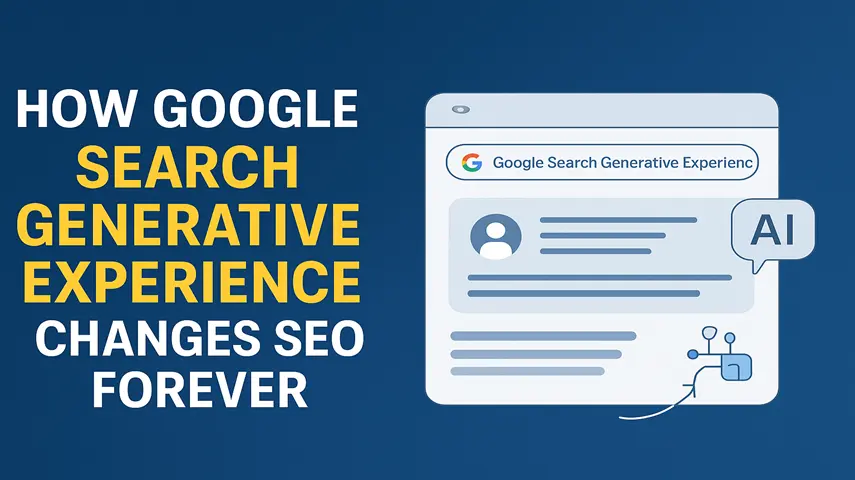The Largest Contentful Paint (LCP) measure is significant in measuring page loading speed, which is one of the most important aspects of this. LCP detects when the viewport’s largest element becomes visible, providing developers with a clear benchmark for optimizing user-perceived performance. In this detailed book, we will look at what LCP is, its importance, and a variety of practical ways for improving it.
Understanding Largest Contentful Paint (LCP)
LCP is one of the core metrics of Google’s Page Experience signals and is a fundamental aspect of web performance. It focuses on the time it takes for the largest content element to be rendered within the viewport of a user’s browser. This can be a crucial image, a block of text, or any other piece of content. Faster LCP values translate to quicker loading pages and happier users.
Why LCP Matters
- User Experience: Slow LCP times can lead to frustrating user experiences, causing high bounce rates and reduced user engagement.
- Search Engine Ranking: LCP is a key factor in Google’s ranking algorithm. Better LCP scores can boost your website’s visibility and SEO ranking.
- Conversion Rates: Faster LCP times have been linked to improved conversion rates, translating into higher revenue for e-commerce sites.
Now that we understand the importance of LCP, let’s delve into techniques to improve it.
Practical Techniques to Enhance LCP
1. Optimize Images
Images are often the largest elements on a web page, and optimizing them can significantly improve LCP. Here are some image optimization strategies:
- Proper Formats: Use modern image formats like WebP, which offer better compression without sacrificing quality.
- Resizing and Compression: Resize images to their display size and compress them using tools like ImageOptim or TinyPNG.
- Lazy Loading: Implement lazy loading to load images only when they enter the viewport, reducing initial load times.
2. Efficient Resource Loading
Efficiently loading resources can have a substantial impact on LCP. Here’s how to do it:
- Async and Defer: Use the ‘async’ and ‘defer’ attributes for JavaScript files, allowing them to load without blocking the critical rendering path.
- Preloading: Utilize the ‘preload’ attribute to hint to the browser which resources are needed, expediting their loading.
- Optimize CSS Delivery: Minimize the amount of render-blocking CSS and inline critical styles to improve the rendering process.
3. Prioritize Critical Resources
Identify and prioritize critical resources that need to be loaded first. Here’s how:
- Inline Critical CSS: Inline essential CSS to avoid render-blocking, giving the browser styling information right away.
- Critical Fonts: Prioritize loading critical web fonts to ensure text content is visible promptly.
4. Content Delivery Network (CDN)
Leverage a Content Delivery Network (CDN) to distribute content geographically, reducing latency and accelerating content delivery. CDNs store and serve resources from servers closest to the user, enhancing LCP.
5. Browser Caching
Implement browser caching to allow frequently accessed resources to be stored locally on the user’s device. This reduces the need to re-download content on subsequent visits, improving LCP for return visitors.
6. Code Splitting
Divide your code into smaller, manageable chunks and load them only as needed. Code splitting can reduce the initial load time, thus improving LCP.
7. Optimize Server Response Time
A fast server response time is vital for good LCP. Minimize server response times by optimizing database queries, using a content delivery network, and employing server-side caching.
8. Efficient Use of Web Fonts
Web fonts can impact LCP if not loaded efficiently. Consider the following tips:
- Use System Fonts: Utilize system fonts for a faster initial render, and load web fonts asynchronously.
- Font Subsetting: Subset fonts to load only the characters used on the page, reducing font file sizes.
9. Mobile Optimization
Ensure that your website is mobile-friendly by using responsive design techniques and testing your site’s performance on various devices. A smooth mobile experience leads to better LCP.
10. Continuous Testing and Monitoring
Regularly monitor your website’s LCP using tools like Google PageSpeed Insights, Lighthouse, or web.dev. Continuous testing helps identify and address performance issues as they arise.
Case Studies and Success Stories
Several websites have successfully improved their LCP by implementing the above strategies. For instance, The New York Times reduced its LCP by 45% through image optimization and efficient resource loading. Likewise, Shopify achieved a 15% increase in conversions by optimizing their web fonts and implementing lazy loading.
Conclusion
Largest Contentful Paint (LCP) is a crucial metric for measuring web page loading performance. By implementing the techniques outlined in this guide, you can significantly enhance LCP, leading to improved user experiences, better search engine rankings, and higher conversion rates. Remember that web performance is an ongoing process, and continuous testing and optimization are key to maintaining a fast and user-friendly website. Keep in mind that each website is unique, and it may require a tailored approach to address specific performance issues. Ultimately, a faster LCP translates to happier users and more successful online experiences.




